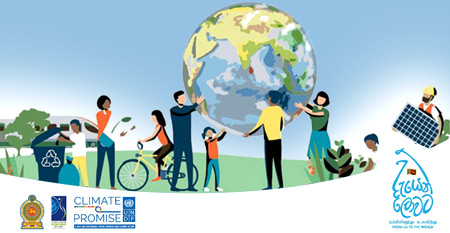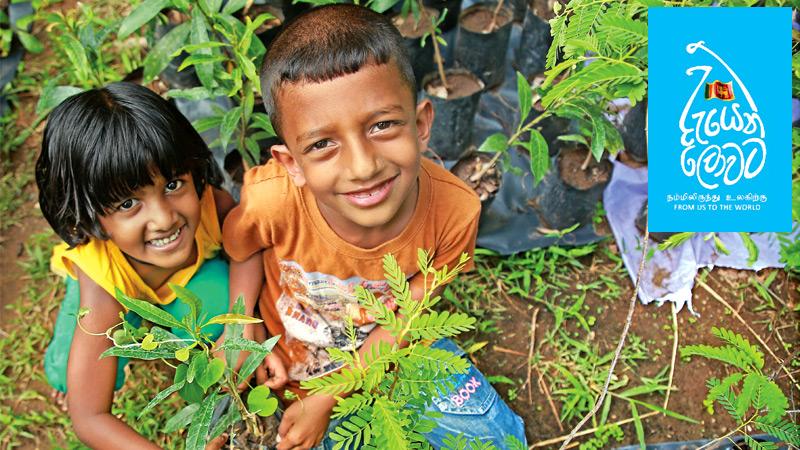
From us to the world:
With this background, it is essential for every country to implement their NDCs, as a part of the global effort to combat climate change. Sri Lanka's commitment to this effort is our contribution to the sustainable future of our country as well as the entire world. This has led to the theme ‘From Us to the World,’ where we get to decide what kind of future we would like to offer our children.
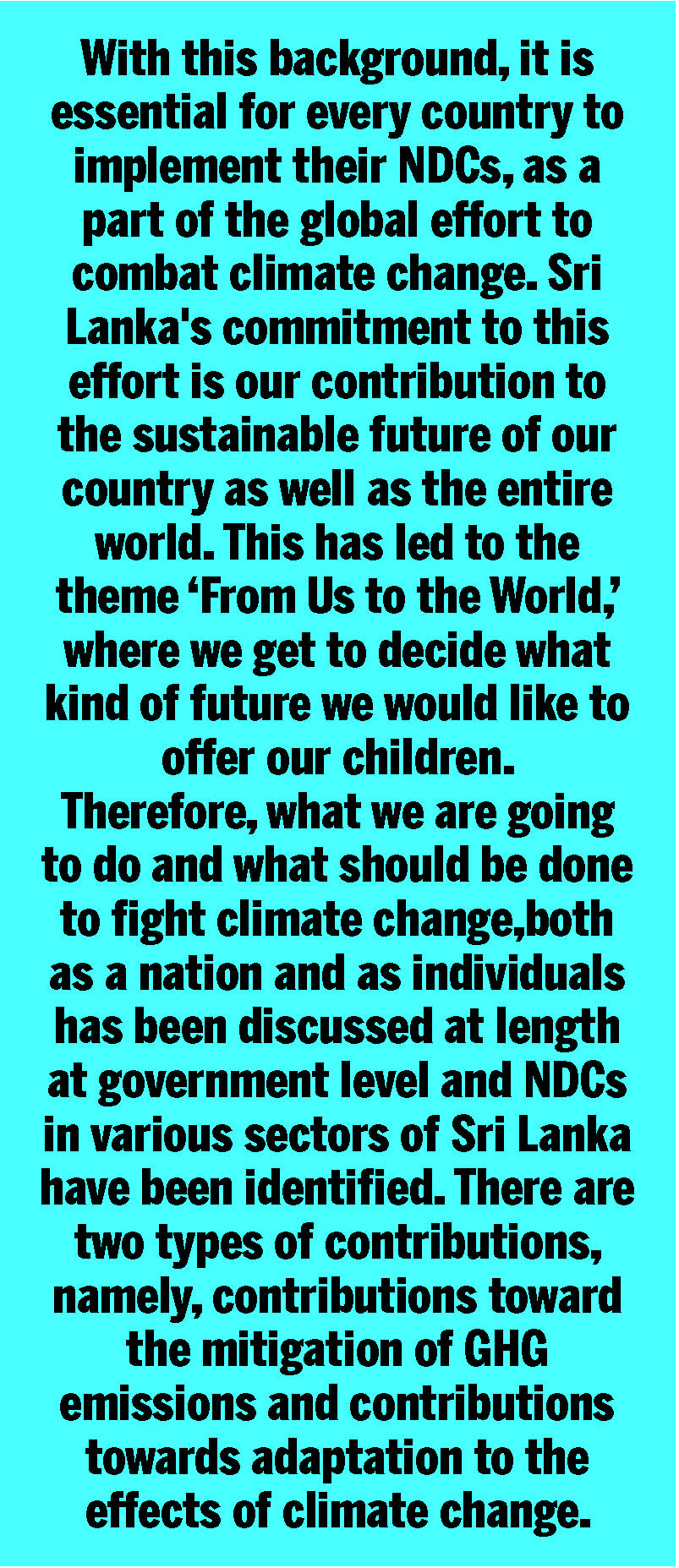 Therefore, what we are going to do and what should be done to fight climate change,both as a nation and as individuals has been discussed at length at government level and NDCs in various sectors of Sri Lanka have been identified. There are two types of contributions, namely, contributions toward the mitigation of GHG emissions and contributions towards adaptation to the effects of climate change.
Therefore, what we are going to do and what should be done to fight climate change,both as a nation and as individuals has been discussed at length at government level and NDCs in various sectors of Sri Lanka have been identified. There are two types of contributions, namely, contributions toward the mitigation of GHG emissions and contributions towards adaptation to the effects of climate change.
A new reality
The global average temperature is gradually increasing due to the increase in the concentration of Greenhouse Gases (GHGs), i.e., carbon dioxide, methane, nitrous oxide and ozone, in the earth's atmosphere. As a result of this global warming, there is an observed long-term change in the usual climate patterns around the world, which is called climate change. It is accepted that this problem has been caused mainly by direct or indirect human activities.
The increase in the concentration of GHG emissions in the atmosphere began in mid-19th century with the Industrial Revolution. The global average temperature has increased by about 1.09 degrees Celsius, between that time and the year 2019. What is more alarming is the prediction of a possible temperature rise in the future, threatening the very existence of life on earth. According to the Sixth Assessment Report of the Intergovernmental Panel on Climate Change, the global temperature may increase by 3.3 to 5.7 degrees Celsius by the end of the 21st century, if GHG emissions continue to rise at the current rate. However, there is hope for our future, if only the world is capable of becoming Net Zero Carbon (the amount of GHGs added to the atmosphere being the same as the amount removed from the atmosphere) by 2050, the increase of global temperature at the end of the 21st century can be limited to between 1 and 1.8 degrees Celsius. But this can only be achieved through the ambitious commitment of all nations and peoples.
Climate change affects different sectors of the world in various ways. Its impact is not just limited to human beings, but also affects flora, fauna and entire ecosystems. The world is already experiencing the negative impacts of climate change. There is an increase in the occurrence and the intensity of extreme weather conditions such as floods, droughts, landslides, heat waves etc. The increased temperature affects the production of many food crops. Global sea level rise is causing major havoc in coastal areas around the world. Also, the threat of extinction of living organisms has increased significantly and changes in the distribution of plants and animals have already been recorded. Considering all this, there is no doubt that climate change is the most serious environmental issue facing world today.
Impact on Sri Lanka
All countries have not contributed equally to the present climate change crisis. In terms of GHG emissions, Sri Lanka's emissions are significantly low, as is the case with many other developing countries. With the average per capita emissions in 2010 being only 1.02 tonnes, Sri Lanka's global contribution to GHG emissions is as low as 0.03%. But there has been an increase in the volume of emissions taking place over the past decade.
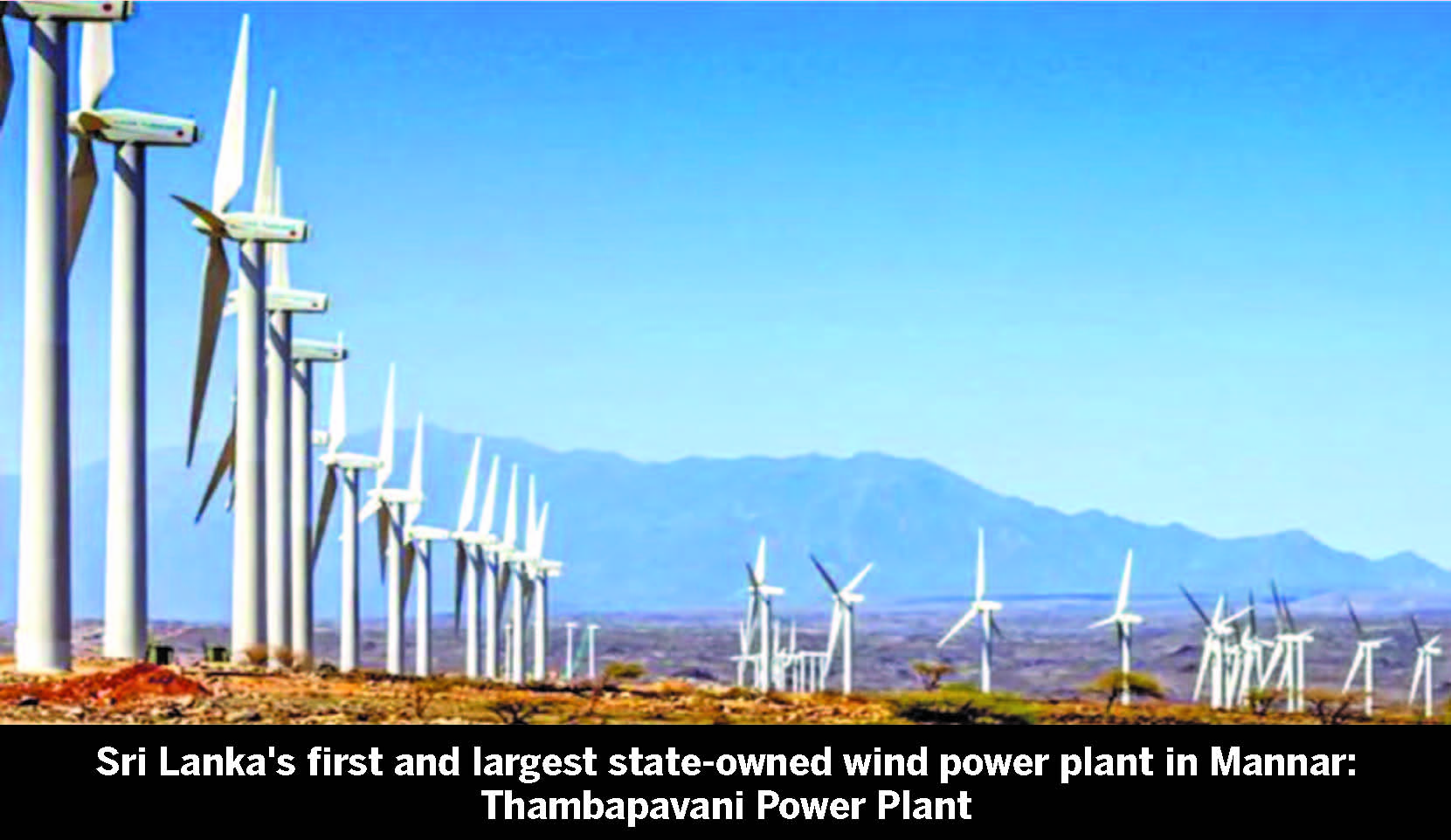 The adverse effects caused by climate change has already affected many sectors in Sri Lanka.Sectors such as agriculture, tourism, fisheries, health, biodiversity, tourism etc. are all affected by climate change on different scales. The frequency of extreme weather conditions in the country has significantly increased in the recent past. Such events include flash floods and heavy rainfall within a short period of time resulting in frequent flooding. Prolonged drought and rising temperature can have a serious impact on plantation crops like tea. On the other hand, paddy cultivation, the major subsistence crop in the country, is affected by both floods and droughts. Due to all these factors, Sri Lanka has been placed among the top ten most vulnerable countries in the Global Climate Risk Index. The impact in the future may become even more serious than today.
The adverse effects caused by climate change has already affected many sectors in Sri Lanka.Sectors such as agriculture, tourism, fisheries, health, biodiversity, tourism etc. are all affected by climate change on different scales. The frequency of extreme weather conditions in the country has significantly increased in the recent past. Such events include flash floods and heavy rainfall within a short period of time resulting in frequent flooding. Prolonged drought and rising temperature can have a serious impact on plantation crops like tea. On the other hand, paddy cultivation, the major subsistence crop in the country, is affected by both floods and droughts. Due to all these factors, Sri Lanka has been placed among the top ten most vulnerable countries in the Global Climate Risk Index. The impact in the future may become even more serious than today.
The graph shows the difference in global mean temperatures from 1850-1900. Different colours depict the data of different agencies.
A global solution
Since the 1970s, the world has been paying attention to global warming and climate change. An international agreement to deal with this was adopted in 1992 and is known as the United Nations Framework Convention on Climate Change (UNFCCC). The Kyoto Protocol was established in 1997 to reduce GHG emissions in developed or industrialized countries. However, there were issues related to its success, and the world realized the need for a new agreement to which all countries could join. As a result, a global agreement on climate change called the Paris Agreement was adopted in 2015.
The main target agreed upon under the Paris Agreement is to limit the global average temperature rise to 2 degrees Celsius by the year 2100 or, if possible, to 1.5 degrees from the global temperature between 1850-1900. At present, global temperatures have risen by nearly 1.1 degrees. Accordingly, a large reduction in GHG emissions is required very quickly in order to achieve the goals of the Paris Agreement. Although this is not an easy task, it is not impossible. Not only will this provide many additional benefits such as clean air and increased jobs in the renewable energy sector, it will be the determining factor in ensuring a sustainable future for the entire planet, as well as for future generations.
 The primary methodology proposed under the Paris Agreement for limiting GHG emissions is the 'Nationally Determined Contributions' (NDC). Under this, each country has given a pledge with details of the voluntary tasks and actions that are to be carried out in their respective countries to reduce GHG emissions. However, scientific studies have revealed that the initially pledged contributions might not be effective to achieve the Paris Agreement targets, and each country made an increased, more ambitious commitment and updated their NDCs in 2021.
The primary methodology proposed under the Paris Agreement for limiting GHG emissions is the 'Nationally Determined Contributions' (NDC). Under this, each country has given a pledge with details of the voluntary tasks and actions that are to be carried out in their respective countries to reduce GHG emissions. However, scientific studies have revealed that the initially pledged contributions might not be effective to achieve the Paris Agreement targets, and each country made an increased, more ambitious commitment and updated their NDCs in 2021.
A new path for Sri Lanka
Sri Lanka pledged its first NDCs in 2016. These were reviewed later, and updated NDCs were approved in 2021 as Sri Lanka’s contributions to be achieved between 2021 and 2030. The pledge is to reduce GHG emissions by 14.5% in the energy, transport, industry, waste, forestry and agriculture sectors, both conditionally and unconditionally. Also, Sri Lanka is determined to achieve carbon neutrality by 2050.
According to a recent study analyzing all NDC pledges given by the countries of the world in 2021, it is possible to limit the increase in global average temperature to 2 degrees Celsius if all countries fulfil their pledges. However, limiting it to the ideal target of 1.5 degrees is a tough task.
Mitigation of GHG emissions
Since Sri Lanka is not a country that emits a large amount of GHGs, the action that can be taken as a country to mitigate these gases is limited. However, certain measures that can be taken have been identified in six main sectors.
Transport Sector
 The transport sector contributes to the largest amount of GHG emissions in Sri Lanka. Reducing the sector's emissions while meeting people's transportation needs is a challenge. Several strategies are to be used for this purpose,including the reduction of the need for transport, popularizing the use of public transportation, promoting means of transportation with minimal or no emissions and developing road systems.
The transport sector contributes to the largest amount of GHG emissions in Sri Lanka. Reducing the sector's emissions while meeting people's transportation needs is a challenge. Several strategies are to be used for this purpose,including the reduction of the need for transport, popularizing the use of public transportation, promoting means of transportation with minimal or no emissions and developing road systems.
Energy Sector
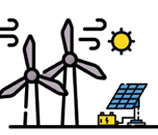 The energy sector is also a major contributor to GHG emissions. In order to reduce emissions in this sector, steps are taken to increase renewable energy such as solar power, wind power and hydropower instead of fossil fuels, improve the energy efficiency of equipment and systems, and use technology that can transform power plants.
The energy sector is also a major contributor to GHG emissions. In order to reduce emissions in this sector, steps are taken to increase renewable energy such as solar power, wind power and hydropower instead of fossil fuels, improve the energy efficiency of equipment and systems, and use technology that can transform power plants.
Industrial sector
 There are many measures that can be taken to reduce GHG emissions in the industrial sector. These include the promotion of the use of sustainable renewable energy (e.g., biomass) instead of fossil fuels, use of a cleaner production approach, introduction of the circular economy concept and the establishment of eco-friendly industrial parks and industrial villages.
There are many measures that can be taken to reduce GHG emissions in the industrial sector. These include the promotion of the use of sustainable renewable energy (e.g., biomass) instead of fossil fuels, use of a cleaner production approach, introduction of the circular economy concept and the establishment of eco-friendly industrial parks and industrial villages.
Wastesector
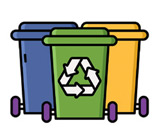 Reducing the generation of waste is a primary task in limiting emissions in waste management. Also, among the measures that can be taken include the proper segregation of waste, increase of the amount of waste recycled and composting. Waste is now being used to generate electricity.
Reducing the generation of waste is a primary task in limiting emissions in waste management. Also, among the measures that can be taken include the proper segregation of waste, increase of the amount of waste recycled and composting. Waste is now being used to generate electricity.
Forestry Sector
 Forests can contribute to the conservation of the environment as well as to mitigate Greenhouse Gas emissions. The goal of increasing the country's forest coverage to 32% by 2030 is a target aimed at achieving this. Growing tree covers outside the forests such as in cities, roadsides, on government land or in backyards can also help reduce GHG emissions.
Forests can contribute to the conservation of the environment as well as to mitigate Greenhouse Gas emissions. The goal of increasing the country's forest coverage to 32% by 2030 is a target aimed at achieving this. Growing tree covers outside the forests such as in cities, roadsides, on government land or in backyards can also help reduce GHG emissions.
Agriculture sector
 Measures that can be used to mitigate GHG emissions in the agricultural sector include the reduction of post-harvest lossesof crops, increasing crop productivity, and the promotion of the use of renewable energy (solar and wind) in agriculture.
Measures that can be used to mitigate GHG emissions in the agricultural sector include the reduction of post-harvest lossesof crops, increasing crop productivity, and the promotion of the use of renewable energy (solar and wind) in agriculture.
Loss and damage
Loss and damage caused by climate change is another important aspect to be considered in this crisis. Identification of the gaps in knowledge on climate-related losses and damages, extreme conditions, and slow-onset hazards is crucial in this context.
Existing weather forecasting systems have been proposed to be improved and also to develop a mechanism to determine and report the loss and damage caused by climate change.
It is proposed to establish a functional agency structure covering all sectors for loss and damage.
Is this contribution enough?
A number of Sri Lankan government institutions are implementing various activities under the initiative of the Ministry of Environment to address climate change and its impacts. However each individual citizen can and should make certain changes in their own lives and lifestyles to contribute to this national and global cause. There are many simple actions that any of us can to address this issue such as follows:
• Use a bicycle or walk short distances (picture - a person on a bicycle and foot)
• Use public transport such as trains and buses instead of private vehicles (picture - a bus and a train)
• Switch to solar power at home and at work level (Figure - A solar panel)
• Use of energy efficiently at home and at work (image – a rotating fan)
• Switch to energy-efficient electrical appliances (images - a tungsten bulb, CFL and LED bulbs)
• Reduce, re-use and prevent the amount of waste generated (image - a zero waste symbol?)
• Proper segregation and disposal of waste, including recycling and composting (images - recycling symbol, compost bin)
• Choose products with a low environmental impact (images - eco-friendly labels on products)
• Avoid overconsumption of goods including food and water (Figure - A food table showing overconsumption)
• Plant a tree in your own backyard and start home-gardening (image – in a symbol of planting a tree)
The collective impact as a result of these small steps taken by us as individuals will have an impact at the national as well as the global level to combat climate change, if we all commit to it. These individual steps will help limit global warming to 1.5 degrees Celsius, the ambitious target of the Paris Agreement, under the current pledges the world has made to reduce emissions. Our small steps and simple actions will ensure a better, sustainable future for our children and the well-being of our world.
Adaptation to climate change
There are three main focus areas in adaptation, i.e., food security, resilient ecosystems and healthy living. Adaptation measures will be implemented in 9 identified sectors under these.
Food safety
 Agriculture, livestock and fisheries together with irrigation play a key role in the food security of the people in Sri Lanka. With the predicted rise of temperature, erratic and unseasonal rainfall, unpredictability of the monsoons and sea level rise can impact these sectors severely. Hence the food security will be challenged if no appropriate adaptation measures are incorporated into these sectors.
Agriculture, livestock and fisheries together with irrigation play a key role in the food security of the people in Sri Lanka. With the predicted rise of temperature, erratic and unseasonal rainfall, unpredictability of the monsoons and sea level rise can impact these sectors severely. Hence the food security will be challenged if no appropriate adaptation measures are incorporated into these sectors.
Resilient Ecosystems
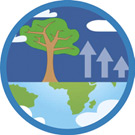 Biodiversity and coastal and marine sectors comprise of unique ecosystems, habitats and species. They contribute to human wellbeing by way of ecosystem services that they provide. Shift of ecological zones, increased sea surface temperature, rainfall variation, sea level rise expected due to climate change is quite likely to bring about changes in species and habitats. This could have negative impacts on the overall ecosystems of Sri Lanka, if adequate measures are not taken to identify and manage these changes in a manner that will make both species and habitats more resilient to predicted changes. Tourism which is one of the main service sectors to capitalize on these resources, will also be adversely affected.
Biodiversity and coastal and marine sectors comprise of unique ecosystems, habitats and species. They contribute to human wellbeing by way of ecosystem services that they provide. Shift of ecological zones, increased sea surface temperature, rainfall variation, sea level rise expected due to climate change is quite likely to bring about changes in species and habitats. This could have negative impacts on the overall ecosystems of Sri Lanka, if adequate measures are not taken to identify and manage these changes in a manner that will make both species and habitats more resilient to predicted changes. Tourism which is one of the main service sectors to capitalize on these resources, will also be adversely affected.
Healthy living
 Higher temperatures and increased frequency of weather-related disasters and the increased risk of flood, drought and landslides may result in a spread of diseases and deaths. Vector borne diseases will create inhospitable conditions in both urban/ suburban areas across the country. Moreover, climate-related issues such as malnutrition are to be controlled.
Higher temperatures and increased frequency of weather-related disasters and the increased risk of flood, drought and landslides may result in a spread of diseases and deaths. Vector borne diseases will create inhospitable conditions in both urban/ suburban areas across the country. Moreover, climate-related issues such as malnutrition are to be controlled.